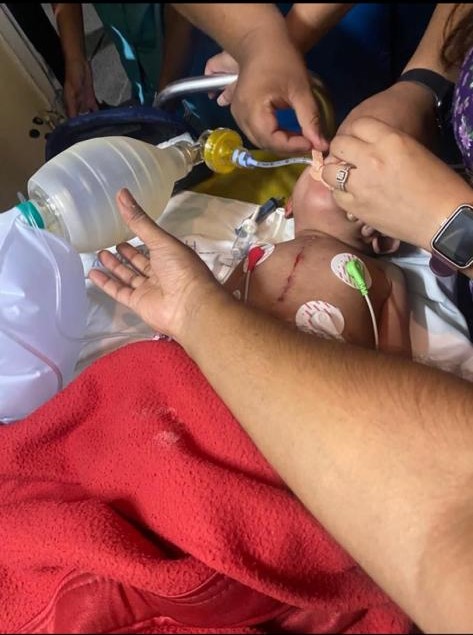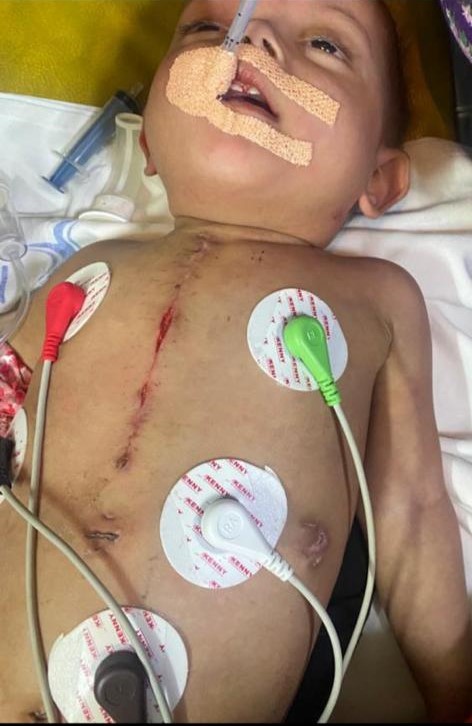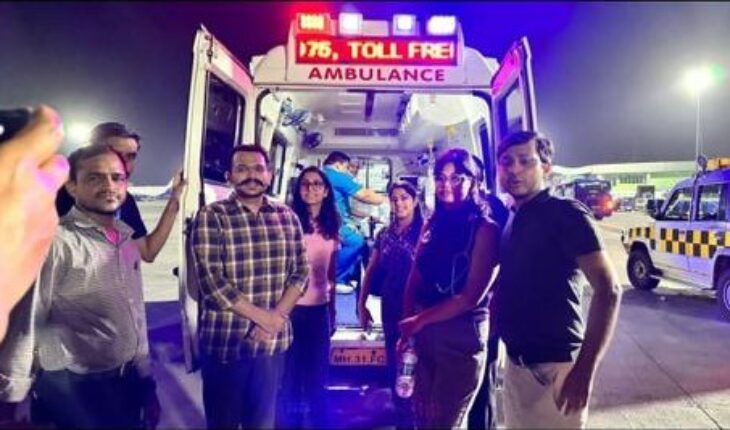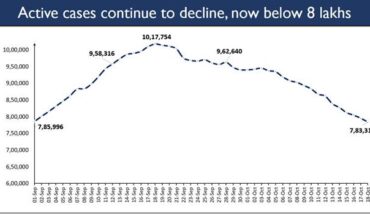New Delhi : In a tense moment high in the skies, a 14 months old baby, who was saved by a team of doctors from All India Institute of Medical Sciences ( AIIMS) on board a Bengaluru- Delhi Vistara flight on Sunday, is in a critical stage on a life support ventilator at a Nagpur hospital in Maharashtra.

“Late night on August 27, a critical medical situation arose involving an infant passenger -a 14-month-old baby -travelling on Flight No. UK814 of Vistara Airlines from Bangalore to Delhi. In a remarkable display of preparedness and professionalism, co-passengers from medical backgrounds on board promptly initiated life-saving measures by providing CPR (cardiopulmonary resuscitation) to the baby passenger,” said deputy general manager (communications) of Nagpur-based KIMS-Kingsway Hospitals Aejaz Shami in a statement.
As the situation got critical, the airline team efficiently coordinated with Nagpur airport authorities for a emergency landing in Nagpur. KIMS-Kingsway Hospitals’ ambulance was at service to ensure the seamless transfer of the Infant passenger to KIMS- Kingsway Hospital, the statement added.
A team of medical experts, was a co-passenger, and returning from an even hoasted by the Indian Society for Vascular and Interventional Radiology (ISVIR) stepped up, exemplifying the core spirit of their profession.
Senior Resident (Cardiac Radiology) Dr Damandeep Singh, Senior Resident (Anaesthesia) Dr Navdeep Kaur, Senior Resident (OBG) Dr Oishika, former senior resident (AIIMS Radiology) Dr Rishab Jain, and Senior Resident (Cardiac Radiology) Dr Avichala Taxak found themselves jumping into action when a distress call came through in the cabin of the Vistara Airline flight UK-814.

As fellow passengers watched in awe, these individuals — their backgrounds as diverse as their skills were complementary — transformed from mere travellers into a formidable medical team.
The flight, which had embarked on a routine journey from Bengaluru to Delhi, quickly turned into a tableau of urgency and hope.
What happened in Air?
The young child’s mother was in a frantic state as her two-year-old suddenly became cold and unresponsive. She immediately urged the plane’s crew for an emergency landing, prompting the aircraft’s diversion to Nagpur.
Before any decision to land was made, the crew sent out an urgent call over the PA system, inquiring if there were any medical professionals onboard. Remarkably, five doctors were present. Without hesitation, they leapt into action.
The All India Institute of Medical Sciences (AIIMS) detailed this dramatic sequence of events in a comprehensive statement. The narrative confirmed that during the Bengaluru-to-Delhi flight on Vistara Airline UK-814, a medical emergency arose. The affected passenger was a young girl, previously operated on for intracardiac repair, who had turned cyanotic, showcasing signs of unconsciousness and a bluish tint, especially on her lips and fingers.
The quintet, all from AIIMS in New Delhi, swiftly assessed the situation. Their quick examination revealed that the girl had no pulse, her limbs were cold, and she was not breathing. Using the limited medical resources available in-flight, they started cardiopulmonary resuscitation (CPR).
Despite the challenging conditions, they were able to insert an intravenous cannula and establish an oropharyngeal airway. This intervention led to the stabilization of the young girl’s blood circulation. Complications arose when she experienced a cardiac arrest, necessitating the use of a defibrillator.
Over a tense 45-minute period, while the plane made its way to Nagpur, the doctors worked tirelessly. Upon landing, they handed over the now stable child to a waiting pediatrician, who ensured she received further care in a local hospital.
What is cyanosis?
Doctors described cyanosis as a condition where the skin or mucous membranes turn blue. This discoloration can happen when oxygen doesn’t adequately bind to the hemoglobin due to issues in the respiratory, cardiovascular, or central nervous systems.
“Cyanosis usually manifests when there’s a significantly low amount of oxygen linked to the hemoglobin. This bluish hue can signal that the body’s tissues aren’t getting enough oxygen,” explained one physician.
Furthermore, cyanosis could be indicative of an underlying medical condition, and surgical procedures might be necessary to rectify congenital heart defects that cause it.
For young babies and newborns with specific cyanotic congenital heart conditions — such as tetralogy of Fallot, tricuspid atresia, truncus arteriosus, or total anomalous venous return — it’s crucial to quickly consult a cardiologist for evaluation and potential intervention.





